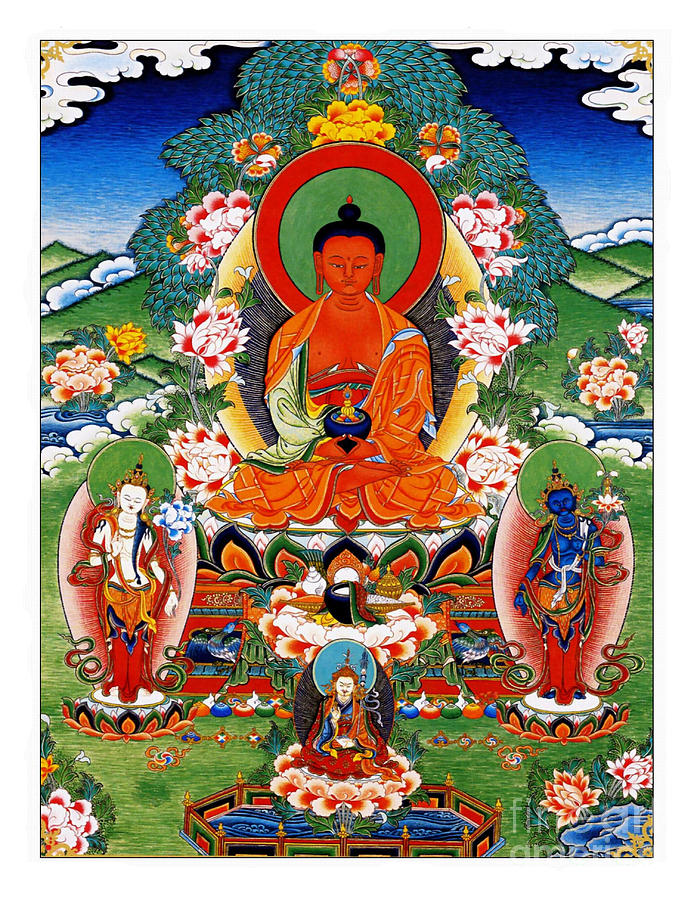
Pin on Amida Buddha
The Name "Namo Amitabha" is the body of Amitabha Buddha, filled with boundless kindness and compassion, perfect and complete wisdom, and splendid merits and virtues. It is also filled with Amitabha's light, his vow-mind, his supernormal powers and energy, and all the exquisite perfections of Buddhahood. The Sutra of Amitabha's.

Large Namo Amida Buddha posters, free to a good home! r/Buddhism
The name "Amita" comes from the Sanskrit Amitabha and Amitayus, translated "Boundless, or Infinite Light and Life."The Chinese is (阿弥陀佛) A Mi Tuo Fo, the Tibetan is O-pa-me, the Korean is Amit'a Bui, the Vietnamese is A-di-da Phat, and the Japanese is Amida Butso.He became in China and Japan especially, the supreme personification of the Dharmakaya, the highest enlightenment.

Remembering Amida Buddha's Great Compassion for us, we exclusively recite, Namo Amituo Fo
The particle "namo" takes the dative case of both following words. "Amitabha Buddhaya" doesn't make any sense as a phrase, nor does "namo Amitabha." Not wanting to deal with the nuances of inflections is probably one reason most people say it in an uninflected language like Chinese, Japanese or Korean.

The Amida Buddha statue in Hasedera Temple, Kamakura, Japan🇯🇵🙏🌸 Buddhism
Upon the altar, Amida Buddha merely provides a visual connection to the unseen spiritual realm that pervades the mundane. The recitation of "Namo Amida Butsu," known as the nembutsu, has the same intention. As a temple minister, I witness how the lives of Shin followers are enhanced by this association with the sacred.

Pin on Zen
Amitabha fulfils the "savior" role amongst the Buddhas (together with his spiritual children Avaolokiteshvara and Tara) — this because of his "great vow" in 48 points (see sutra below.) His actual name praise is, in full: "Om Namo Amitabhaya Buddhaya" in Sanskrit. (In Japanese, Namu Amida Butsu) Amitabha Buddha.

Sold Price A WOOD FIGURE OF AMIDA BUDDHA WITH RESIDUE OF GILDING, Japan, late Edo period
Namo Amitābha is recited as either namo amida butsu or namu amida butsu, which means, ''In the Infinite Light Buddha I take refuge.'' It has also been translated as ''I call out to the Infinite.

Namo Amitabha Buddha 40 Painting by Jeelan Clark
Throughout the day, practice deep hearing; become aware and entrust in Great Compassion, symbolized as Amida Buddha, which surrounds and sustains you and all beings. Let the feeling of gratitude and compassion arise from within you and recite the Buddha Name, Namo Amida Buddha. Suggested Daily Prayers Lunch Break Prayer Practice

Amitabha Buddha
The nembutsu is the recitation of "Namo Amida Butsu," which may be translated as "I take refuge in Amida Buddha." It is also often considered an expression of gratitude - a practical acknowledgement of the two truths of Buddhism: impermanence and interdependence.

Amitabha Mantra (Long) YouTube
In order to achieve this, Amida Buddha has selected the Nembutsu from among the 84,000 paths available. However, the Nembutsu is not the parroted repetition of the Name Namo Amida Butsu. It is hearing the command of the Primal Vow calling to and summoning us.

Namo Amitabha Buddha 36 Painting by Jeelan Clark
The nembutsu is the core practice for Pure Land Buddhists across the world. It is a way of aligning ourselves with the wholesome energy of Amida Buddha, the Buddha of Infinite Light. We do this by saying 'I entrust myself to Amida Buddha' in different languages, for example; Namo Amida Bu or Namu Amida Butsu (Japanese), Namo Amitoufo (Chinese), Namu Amita Bul (Korean) or Namo Amitabha.

A standing figure of Amida Buddha Early Muromachi Period (13921568) Mid 16th century Lacquered
Amitābha (Sanskrit: अमिताभ, IPA: [ɐmɪˈtaːbʱɐ]) is the principal Buddha of Pure Land Buddhism.In Vajrayana Buddhism, Amitābha is known for his longevity, discernment, pure perception, and the purification of aggregates with deep awareness of the emptiness of all phenomena. According to some sutras, Amitābha possesses infinite merit resulting from great deeds cultivated.

Pin on Namo Amiđà Phật
In Pure Land Buddhism, the ordinary person, recognizing his or her bombu nature, reaches out for help to Amida, the buddha of infinite light, typically by saying Amida Buddha's name (practicing vocal nembutsu). In Japanese, nem or nen means "mindfulness," and butsu is "buddha.". Nembutsu is, therefore, "mindfulness of [Amida] Buddha

Namo Amitabha Buddha 1 Free Stock Photo Public Domain Pictures
The essential practice of Shin Buddhism is to voice the Buddha's Name, "Namo Amida Butsu," with a sense of gratitude. Viewed from a superficial point of view, this may appear to be a prayer voiced to a god, but that's not entirely accurate. Unfortunately, using unfamiliar traditional terminology to explain its meaning may add another.

Who’s Who in Buddhism Amitabha Buddha The Buddha Journey
It means that the seeker is opening her/himself to Amida's saving Light and Compassion. It is the seeker responding to Amida's Call and opening him/herself to Amida Buddha's Other Power. Another meaning is, "Namu" represents me, the person who is saved, and "Amida Butsu" represents that which saves me, i.e. the Other Power of Amida Buddha. Once.

Bronze Amida Buddha Statue Bronze Oriental
NAMO AMITABHA -108 Repetitions -Nam Mô A Di Đà Phật- Namo Amituofo- 南无阿弥陀佛Amitabha Buddha in Pure Land (Ultimate Bliss)Namo Amitabha, Sanskrit words, litera.
FileAmida Buddha, view 2, Japan, 17th century AD, wood with gilding San Diego Museum of Art
The Nianfo (Chinese: 念佛; pinyin: niànfó), alternatively in Japanese as 念仏 (ねんぶつ, nenbutsu), Korean: 염불; RR: yeombul, or in Vietnamese: niệm Phật, is a Buddhist practice central to the tradition of Pure Land Buddhism, though not exclusive to it.In the context of Pure Land practice, it typically refers to the repetition of the name of Amitābha in a ritualized form.